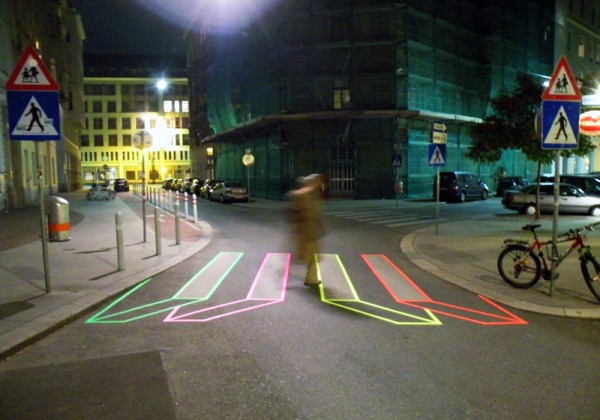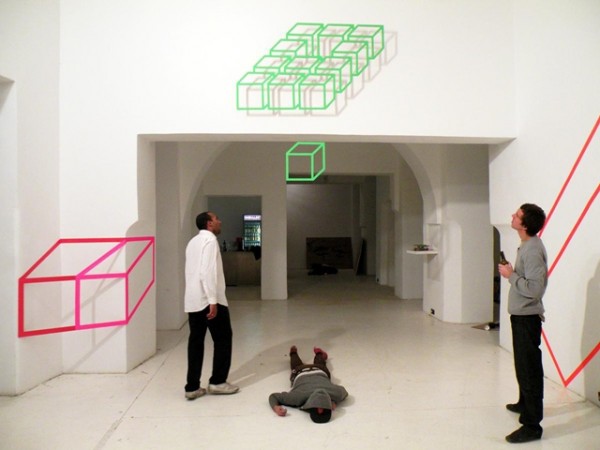
Aakash Nihalani’s solo show, On & Off (Often On), is opening in a few weeks at the Carmichael Gallery in LA. I’m a fan of his public work and indoor installations, and I’m really curious what sort of pieces could be for sale and what the metal sculptural pieces will be like.
In January 2010, Carmichael Gallery presents On & Off (Often On), the first West Coast solo exhibition of Aakash Nihalani. In addition to a characteristically arresting site-specific installation comprised of brightly colored tape, Nihalani introduces a new artistic direction by using metal and plastic to create sculptural objects.
There will be an opening reception for On & Off (Often On) on Thursday, January 21 with Nihalani in attendance. The exhibition will run through February 18, 2010.
Aakash Nihalani is fast becoming recognized as one of the US’s most striking emerging installation artists. Celebrated for his ephemeral modifications of the urban landscape, the young Brooklyn-based tape specialist wields an abstract narrative of isometric shapes and flamboyant hues grounded in quiet irony and idiosyncratic precision. The fluidity of his simple, colorful style, which employs familiar shapes to produce unexpected visuals, initiates an inviting, living dialogue that traverses the chaos of city streets, the white walls of the gallery and the constancy of home.
Nihalani has built a global fan base by selectively placing his artwork on sidewalks and public spaces around New York. His squares, rectangles and cubes, which are constructed from strips of instantly identifiable fluorescent tape, give three-dimensional qualities and a new, often humorous, perspective to the windows, doorways, cement pavement, floor tiles, chain-link fences, bricks, building contours and
subway spaces within which they are embedded. Nihalani completes all public art pieces on site with little to no advanced planning. His style readily adapts to the interior gallery space and into individual works of art, thereby escaping its customarily fleeting existence while continuing to fuse his aesthetic and conceptual objectives.
Nihalani has fashioned a visual language all his own. The neon in his work highlights details that might otherwise go unnoticed, while his minimalist patterns form self-contained pockets which encourage examination both within the isolated space and of the world at large. His work often engages the public by creating three-dimensional environments that can be physically entered, transforming passersby or gallery visitors into participants and offering them a momentary escape from daily life.

